2016 Yamaha YZ250X
Yamaha Keeping Two-Stroke Simple Off-Road
MSRP: $7390
- Off-road racing tuned suspension that works.
- 18-inch wheel, side stand, wide-ratio tranny all for $100 extra.
- Great off-road option for those who bleed blue.
- No electric starter or lighting capability from the ignition.
- May be too motocross for some, but it is a race bike.
Introduction
- A wide ratio transmission, 18" rear wheel, side stand, fuel reserve and a handful of engine mods highlight the new YZ250X.
- If you're looking for an electric starter, this in not the bike.
In 2015 Yamaha introduced its groundbreaking YZ250FX, their first foray in a long while into the serious off-road racing market. In 2016 they stepped up their game adding the 250 two-stroke to the line with the introduction of the YZ250X. Basically a wide ratio transmission, 18" rear wheel, updated cylinder head, power valve and exhaust, side-stand, fuel reserve and some suspension fine tuning all get thrown onto the classic motocross YZ250. The first thing that everyone will notice is the lack of an electric starter and a stator to run lights. While, yes, the bike kick starts easily while sitting on the start line it is still missing that electric start that has become so common. While "real men" don't need a starter and a lot of top pros actually remove them for weight, most riders want one. That's just a fact of the market. Regardless, this bike solidifies Yamaha’s position in a market that they were already a player in. Now with a machine specific to off-road competition from the factory.
Changes
- Aside from off-road additions many internal mods - new cylinder head, lower compression and slimmed exhaust pipe shape make for a very competitive machine.
With Yamaha being the only Japanese manufacturer to keep it’s 250 2-stroke alive while others were dying off, they are no strangers to the platform. The YZ250X is a perfect example of "if it ain't broke don't fix it"... or at least just update it for a more specific purpose. Off-road racing. There are basically 18 changes from the motocross YZ that are very focused for the intended use.
A host of tiny improvements were added to the already solid engine; new cylinder head with increased (2.1cc) volume for lower compression, new power valve ramp shape to alter the valve’s timing, new CDI timing and slimmed-up exhaust pipe shape. This all of course is matched with a five-speed wide-ratio transmission. The clutch springs are a little bit lighter for less lever effort.
The chassis is not overlooked and especially the suspension. The components are identical as are the spring rates but the valving is altered with less low-speed compression and additional high-speed set in the valving. YZX comes with an 18” rear wheel, which is exactly what off-roaders want due to taller sidewalls on the tires and handling characteristics. It also comes with the new Dunlop AT81 which is a very specific tire designed more for durability. There is a side-stand, fuel petcock with reserve, an O-ring chain to round out the off-road goodies.
Power
- The standard YZ250 is a powerhouse 250cc two-stroke and the X is no exception.
- The new powervalve timing allows for overrev and more power to the ground.
- The wide ratio transmission keeps 1st and 2nd the same, lowers 3rd and makes 4th and 5th even higher.
The bike fires right up with the new lower compression through a kick-starter which always works. It sounds very crisp and clean as you warm it up and get ready to ride. Choke it on cold mornings. The jetting is spot-on for sea level. We took the bike all the way up to 8000 Ft. elevation and the YZ gets a little sloppy but dropping the needle works wonders. Yes it is a carb and compared to the now common FI four-strokes it is a little messy if you have to jet it. but it is as good as anything two-stroke when it comes to being crisp. We experienced some of the jetting in riding at elevation where the YZX would get a little rich then go lean (remember there is a Power Jet in the Keihen Carb) starting at about 7000 ft. and then again when mounting an FMF Spark Arrestor for race regulations. We ran Yamaha R2 at 40:1 for most of our testing with 91-octane pump gas. If you run at low RPM for a long time the bike will also load up a bit and take a few seconds to clean out if you get on the gas hard, something that the new Betas with electronic oil-injection do not do.
The YZ250 has always been a powerhouse 250cc two-stroke and the updates to the engine seem to only make the X even better. It pulls smoother, harder and for longer out of corners and wants to wheelie every time. Sometimes the power is so explosive it can be surprising. It is easy to get the front wheel up any time needed with a blip of the throttle or even with some clutch action. Less compression seemed to make the hit come on a little later in the RPM with more ferocity compared to the motocross bike and it also lets the bike rev more. We were told it pulls an additional 500 RPM cleanly on a dyno and we don’t doubt that. It also makes more power at peak and we felt this for sure. The YZX has the overrev that was missing on the motocross bike. Yes, we like this engine better than the YZ for even motocross.
The secret to this is the powervalve opening over a longer RPM spread (now 1500 RPM as opposed to 500 RPM on the motocross engine) combined with the taller exhaust port. With the powervalve closed the port height makes little difference on the torquey and chuggy parts of the powerband. But when it screams that more open exhaust and lower compression are all about the Rs. In the long fast washes it seems to just keep speeding up and will go as fast as you’re willing to go. And here comes one of the two-stroke’s biggest advantages in weight feel. As the motor revs like this the bike does not get much heavier feeling like a four-stroke will.
With 1st and 2nd gears the same as the standard motocross machine it is just as peppy and ready to go off the bottom as ever. The stock gearing of 14/50 will allow you to creep and crawl through the tightest terrain where you'll notice the slightly lighter clutch pull. From the chugging it will whip right up to top RPM no problem. The lower 3rd gear does allow for a bit more shifting at lower RPMs up to third and then using the bottom three gears for tighter riding. Ultimately if you're going for high speed you'll shift right past up into 4th. The top 2 gears, 4th and 5th, are higher ratios and wide in spacing needing the rider to build RPM before the shifts. In open terrain you don’t feel the gap much but on a track that needs fourth, you will. Top speed is pretty much gearing limited and is right at 90 MPH. There is a disadvantage to six-speed gearboxes only if you need the spread of either a very low crawling first gear or a very tall fifth. You can gear for either but you can't have them both.
On a two-stroke you will be shifting more since the overall spread of the powerband isn’t as long as a four-stroke. Luckily the shifting is very smooth between gears as long as the transmission fluid is fresh. The lighter clutch pull makes getting back on top of the RPM’s very easy and it proved pretty durable as well. The quick-adjust makes on-the-fly fine tuning simple if it gets warm.
Suspension
- Keeping the suspension simple (no air spring) has made for an amazingly suspended off-road machine.
Lately the conventional spring KYB fork specifically seems everyone’s favorite and we mostly agree. Especially off-road. They have been almost a “set it and forget it” deal for most and this YZX is no different. The shock is valved to match and the bike is balanced. To top it off Yamaha’s off-road settings are pretty spot on for racing so sending the suspension in for mods is much less likely. In a nutshell it is able to take the hard hits while also working through the soft stuff easily. With less low speed compression the small bumps and the initial plushness of the suspension is, as expected, more compliant and on a light two-stroke this helps take the sharp hits out and give the bike less of a dancing feel across the ground. Then there is the additional high-speed compression that allows the bike to ride a little higher in the stroke and takes over on some of the hard hits to minimize bottoming.
Our settings were pretty simple. At the motocross track we added anywhere from 4-6 clicks of compression damping both front and rear, just to the point where there was some mid-stroke spike in the fork, and it handled everything but the off-rhythm rolling jumps (where the bike would get much deeper in the stroke) and big bottoming landings as good as a motocross bike. For off-road racing we were right at stock or a few clicks open on the compression and rebound to loosen up the action on the smaller stuff. The slower the conditions the more open on the clickers we were. You can trail ride the YZX and it is so much better than it’s motocross brother there is no comparison in the suspension department. The motocross bike will jar you on every bump and the X is planted and controlled without being wallowy at all. It is aggressively plush but not too stiff. We ran the sag at 100-105mm most of the time and the bike is happy here. When one of our testers neglected to adjust the ride height (sag) he suffered with instability and headshake which was not the fault of the bike or a characteristic of the YZX at all.
Chassis - Handling
- While on the heavy side of the two-stroke market (on the scale) the YZX rides light.
- Without a spark arrestor the bike is meant for closed course competition only.
The YZ handling has always been praised. The aluminium frame is rigid but not to much. Yamaha has one of the best adaptations of the wishbone design frame that is more common in steel frame designs. It does not have the stiffness of a twin-spar design and combined with the lighter two-stroke motor has the YZ dancing much less than you’d expect from a two-stroke. It is still light on its wheels but not skittish. Overall the bike is light in side-to-side changes with a little weight in the steering through the bars. This translates to a more stable ride yet the bike is as maneuverable as you’ll get with this much power. And if the bike is acting unstable at all, lower the rear just a little, weather through spring preload or with less high-speed compression in the shock and it will likely go away.
One thing that is a like or hate it has to do with the lack of any compression braking on the two-stroke. It has the front end not feeling as planted when ridden back-to-back with a four-stroke and we found that slowing the rebound can let the front settle in turns. Then there is the strong and deliberate power that likes to lift the front wheel on turn exits so the front end is not planted here either, but it sure was fun. Here being too low in the rear becomes a concern, adding spring preload and/or high-speed compression can help as well. The lack of compression braking also puts more emphasis on the rear brake performance and the Yamaha is just fine. Some felt the rear a little skittish, likely the struggle of going back to a two-stroke had something to do with this. The front brake has plenty of feel and was also remarked as being strong even though the size isn’t increased like on the four-stroke YZs.
The YZX definitely feels light, at 232-pounds (Typo of 242 had been corrected from original post.) with a full tank of gas, the scale number is higher than it seems. It is easy to manhandle and place the bike along the trail, especially in the tighter more technical terrain. When the bike acted unstable in the much faster, rough terrain we learned that the ride height was incorrect. And when you are bouncing through the rough it is almost effortless to loft or pull up on the front end of the YZ in the air or on the ground.
As an off-road bike the YZ250X is not “tool-less maintenance” or “trail ready” as it’s European competition. The air filter is under the seat in normal MX bike fashion. And Yamaha seems to leave it up to you as to whether you want a skid plate or handguards. We do and for the most part can likely do better than what would come stock anyways. Some may also express concerns about the fuel tank size, just over two-gallons. We were able to get the mileage down below 20 MPG in sandy and high-horsepower riding and keep it above 25 when cruising. The reserve gives you about 10-miles if you are easy on the throttle and you can blow it in five if you've been and are still racing along. For durability the tires are a hit and a lot of riders liked the front Dunlop AT81 and the rear was a little less liked but it lasted plenty long.
The YZX is a premium piece of machinery. The plastics all fit together well, the seat is very comfortable and has a good amount of grip, the profile is narrow and easy to straddle with an adjustable top tripleclamp to suit different sized riders. There is definitely a lot of positives in the handling character of this bike and it may be one of the best working aluminum frames out there.
Conclusion
- No electric-start, no problem. Just kick it.
- Another home run for the only Japanese Manufacturer to take on the European dominated off-road spefic market
If you are looking for an electric-starting two-stroke, this isn’t it. If you want a six-speed gearbox, this bike does not have one. After you get over that, if you can, this bike absolutely shreds! Yamaha has done it again. It isn’t a KTM or a Beta and some riders do not want those. In fact there are still a lot of riders who ride and race converted YZ’s because they want the race-only package that a motocross bike offers and are willing and able to make the changes to modify the bike to suit its newfound use. Now you can have a much more appropriate bike for a wider range of riding and you have less modifications to consider and some additional upgrades the aftermarket couldn't address.
First with the FX and now with the X Yamaha have seemingly heard your cries for a competitive off-road bike and produced! With minimal changes to their dominant MX models they have made a huge splash in the off-road market. This two-stroke shredder will definitely be stiff competition for any other two-stroke off-road steeds based purely on performance. And on price too at $7390 which may make up for some of the missing equipment come customization time. If you bleed blue and love the feel of a Yamaha on the track you will love this bike on the trail too.
We feel this bike is a skid plate and a set of handguards away from the starting line at anything from a GNCC to a National Hare & Hound. You could race motocross one weekend and a GP the next. Just mix the gas and go!
Recent Product Tests
What Others Said

http://motocrossactionmag.com/home-page/2016-yz250x-video-is-this-yamahas-ktm-fighter

http://www.motoonline.com.au/2015/09/15/review-2016-yamaha-yz250x-and-yz250fx/

https://www.youtube.com/watch?v=8tb75sUuNfA

https://www.youtube.com/watch?v=8tb75sUuNfA
Rider Opinions
Leave a Reply
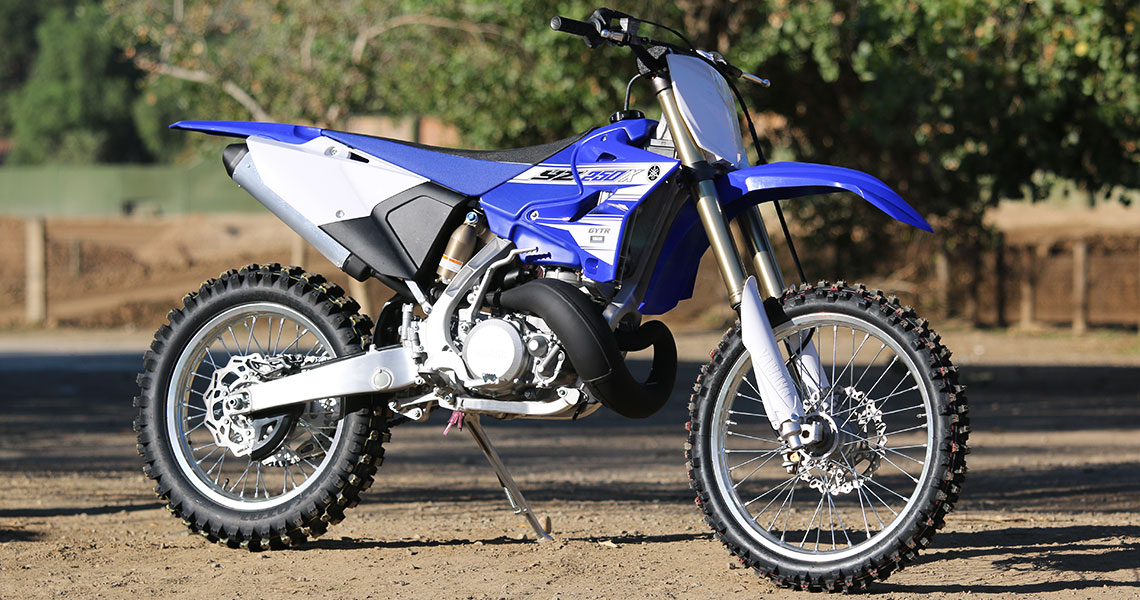

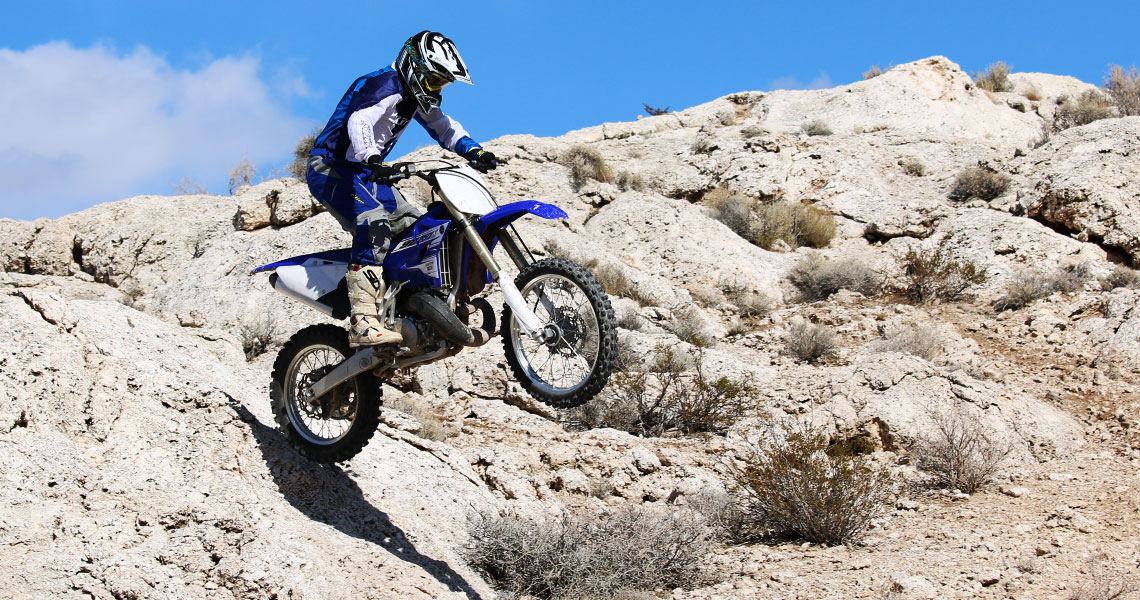



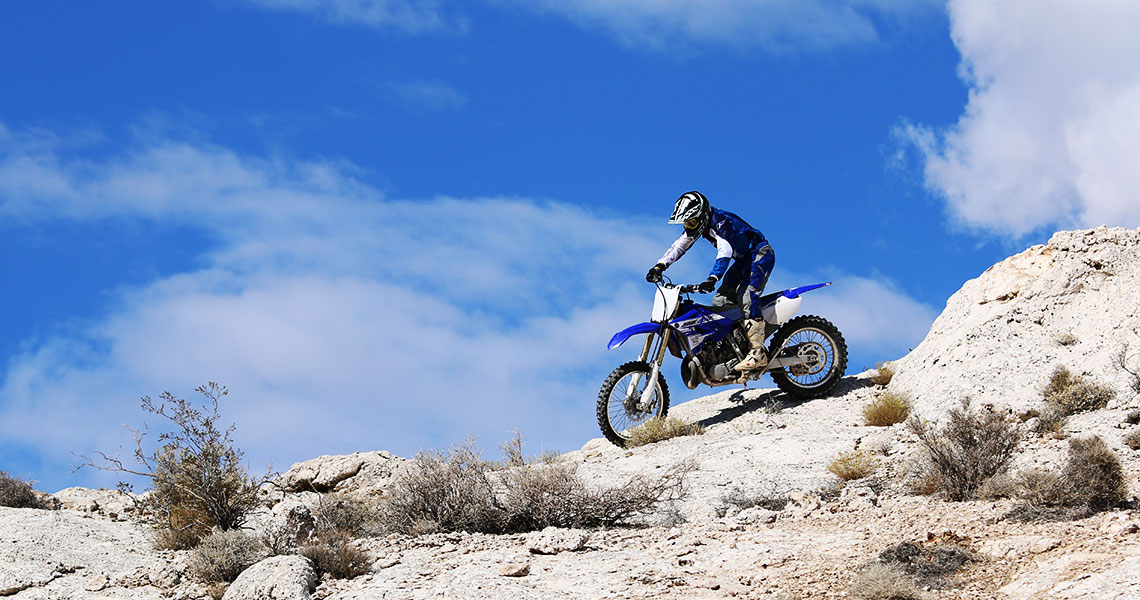

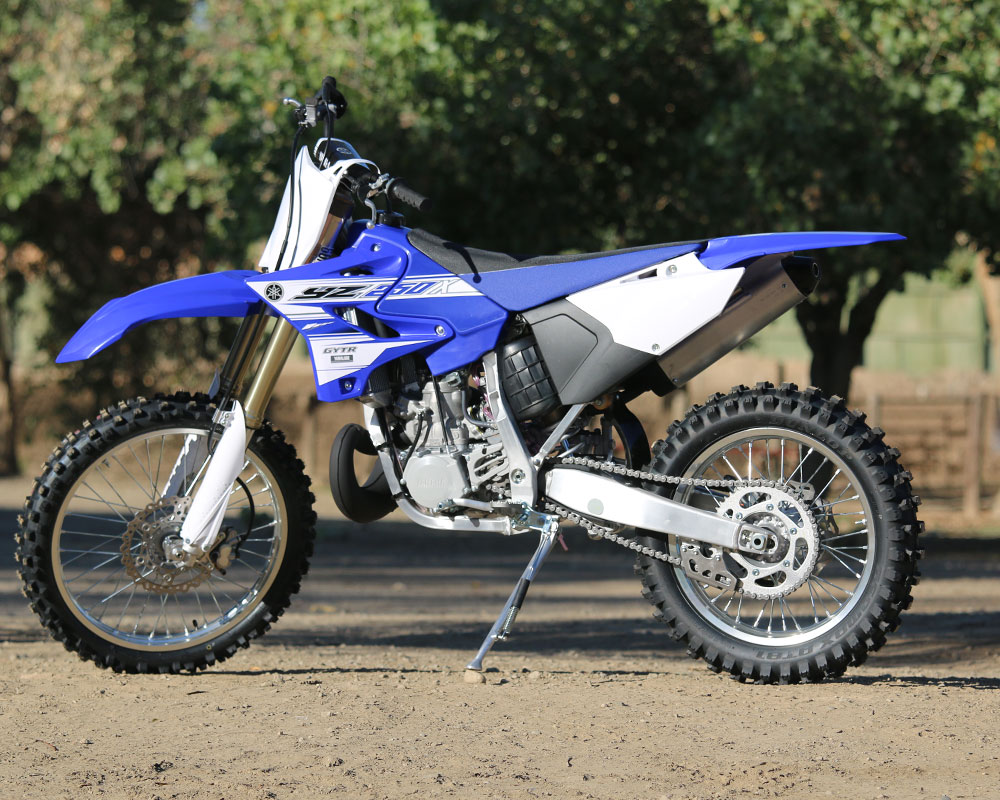
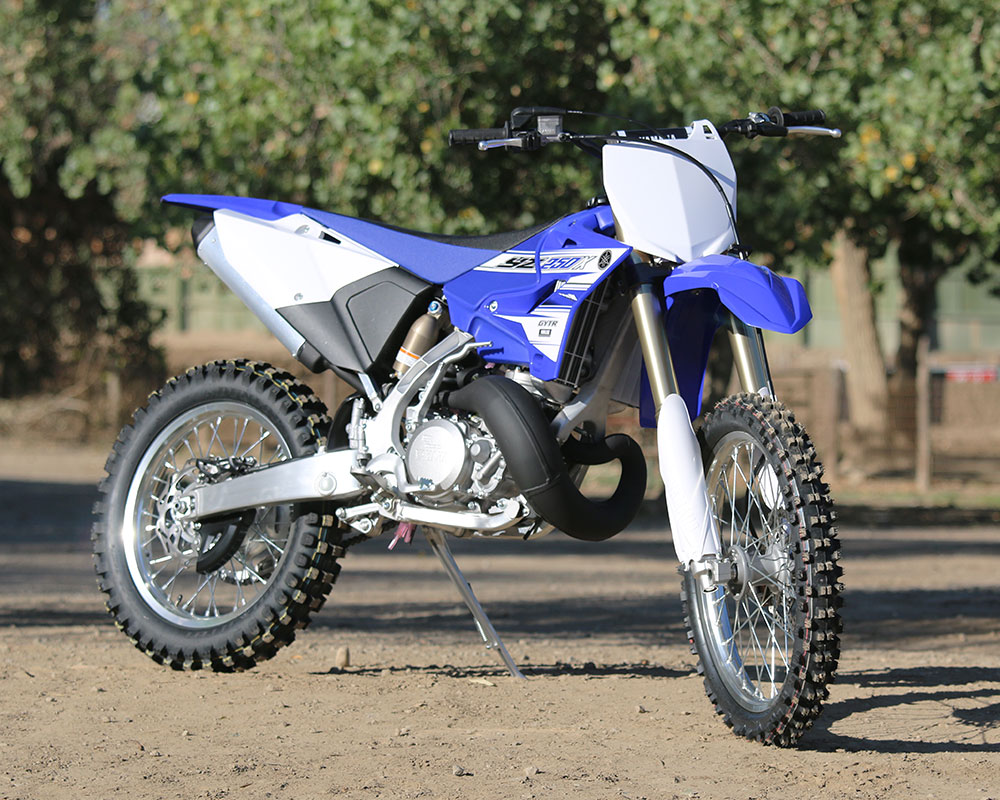
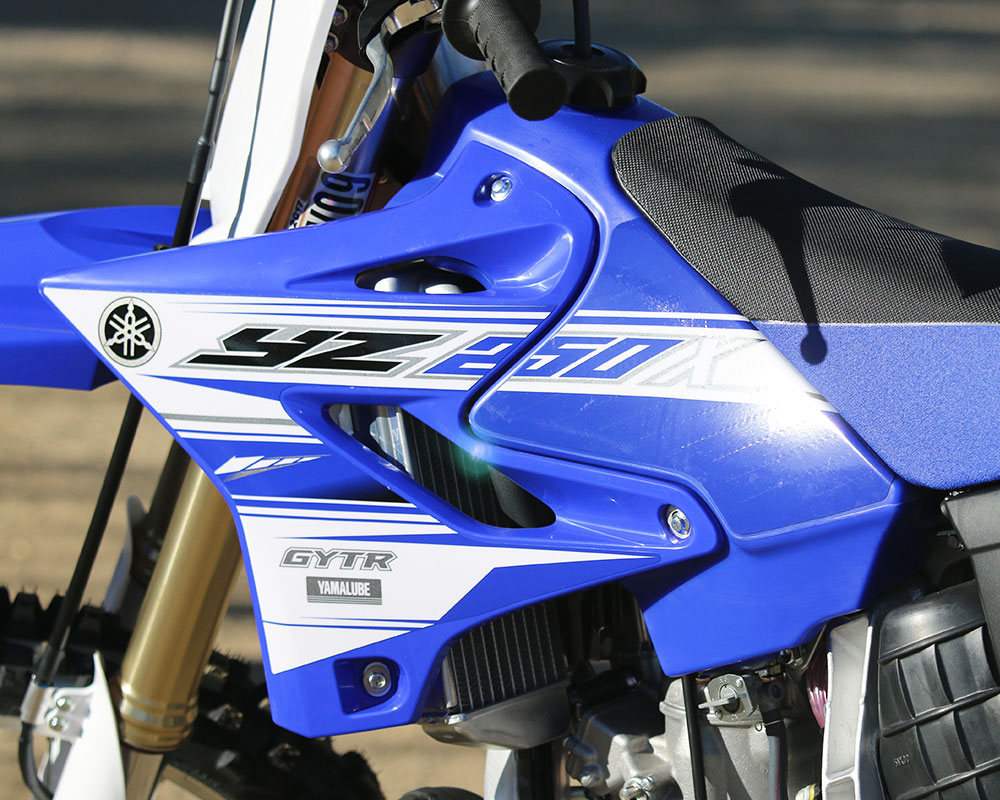


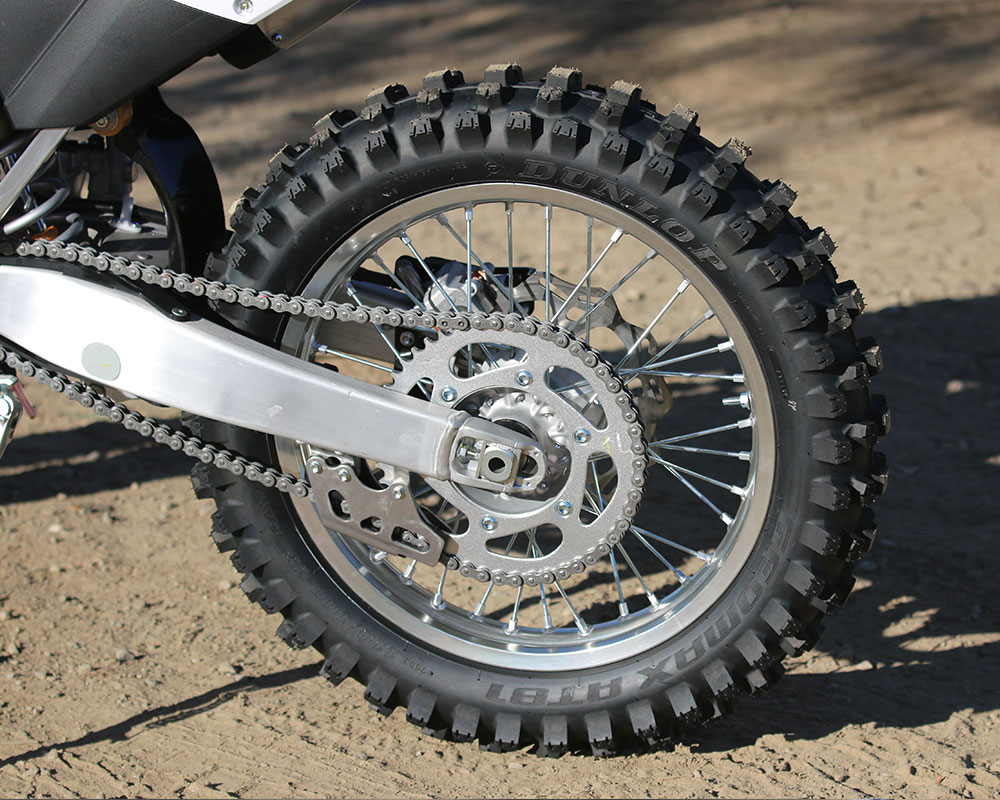
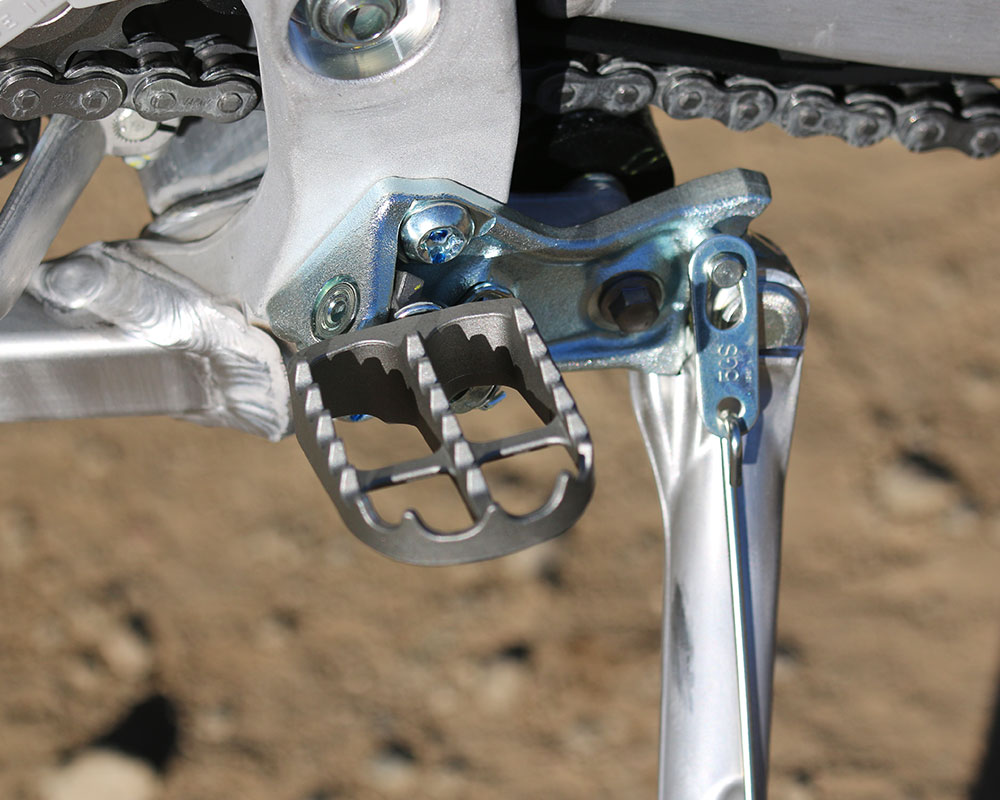
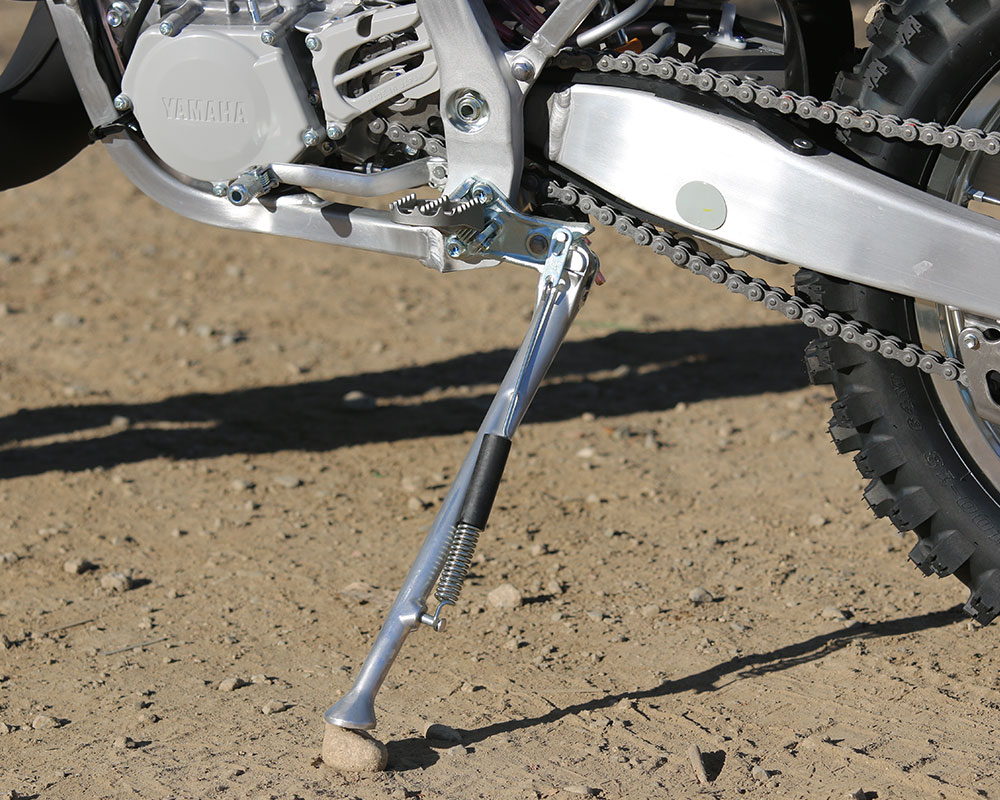

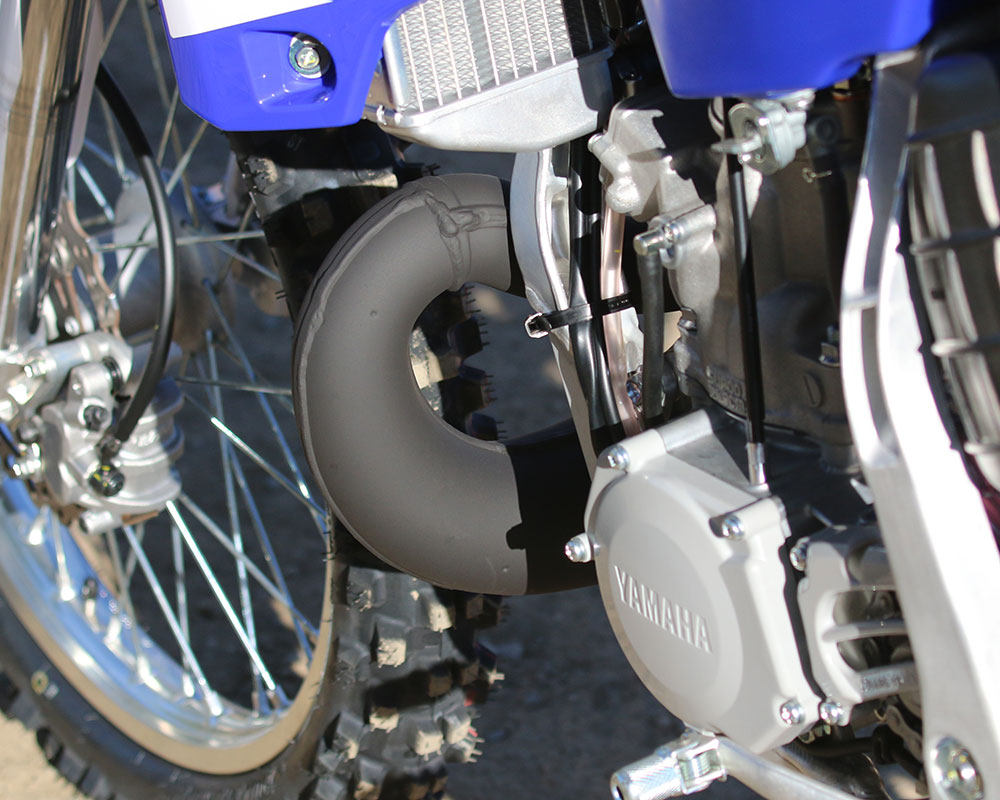

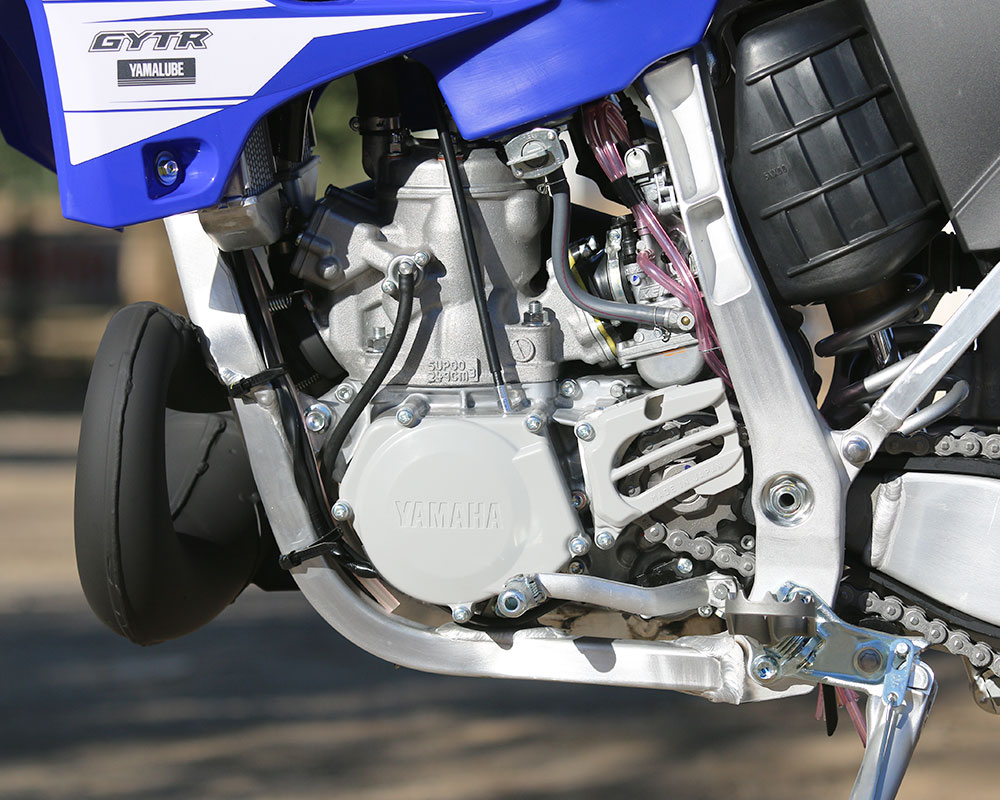




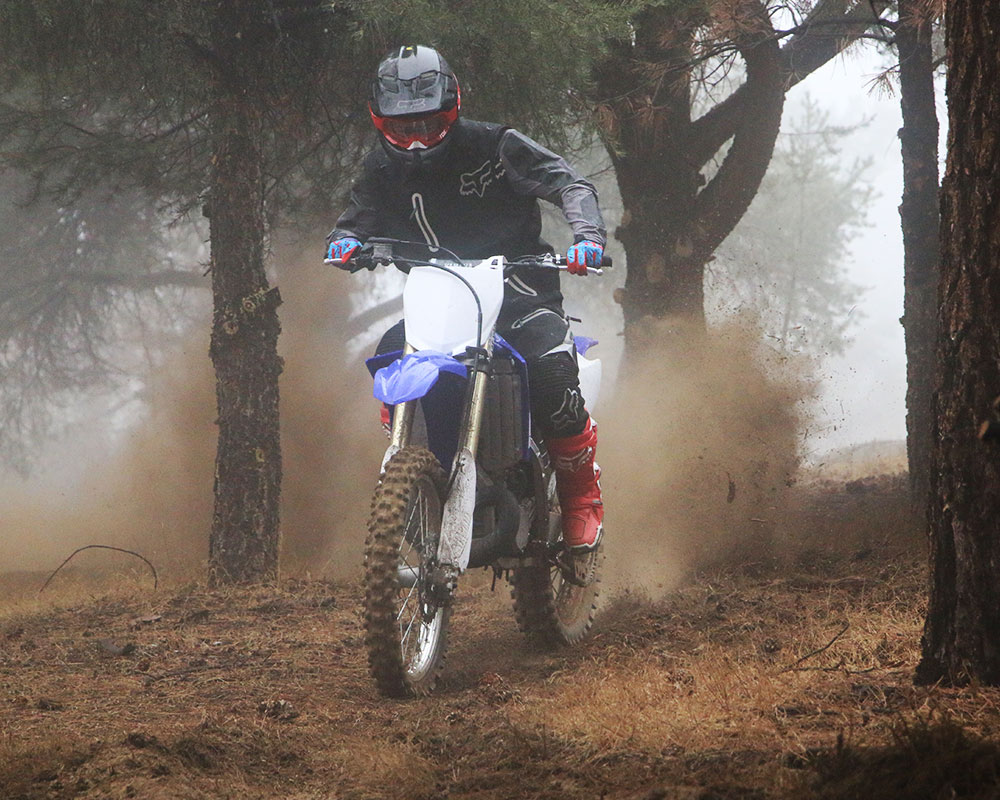
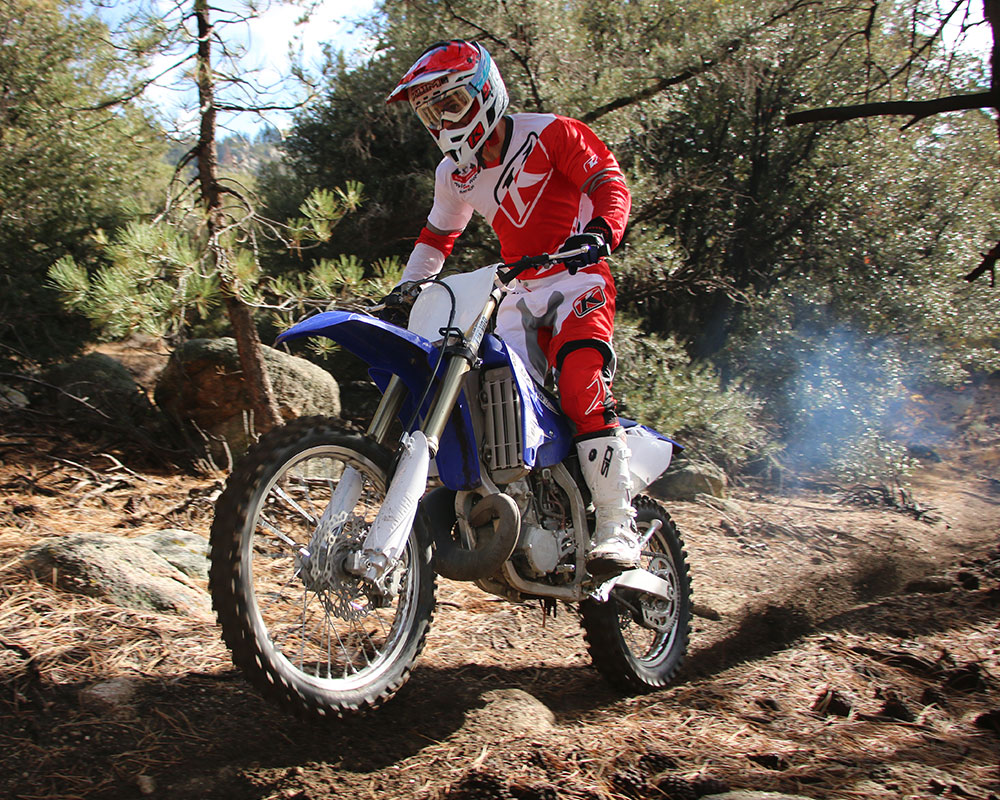

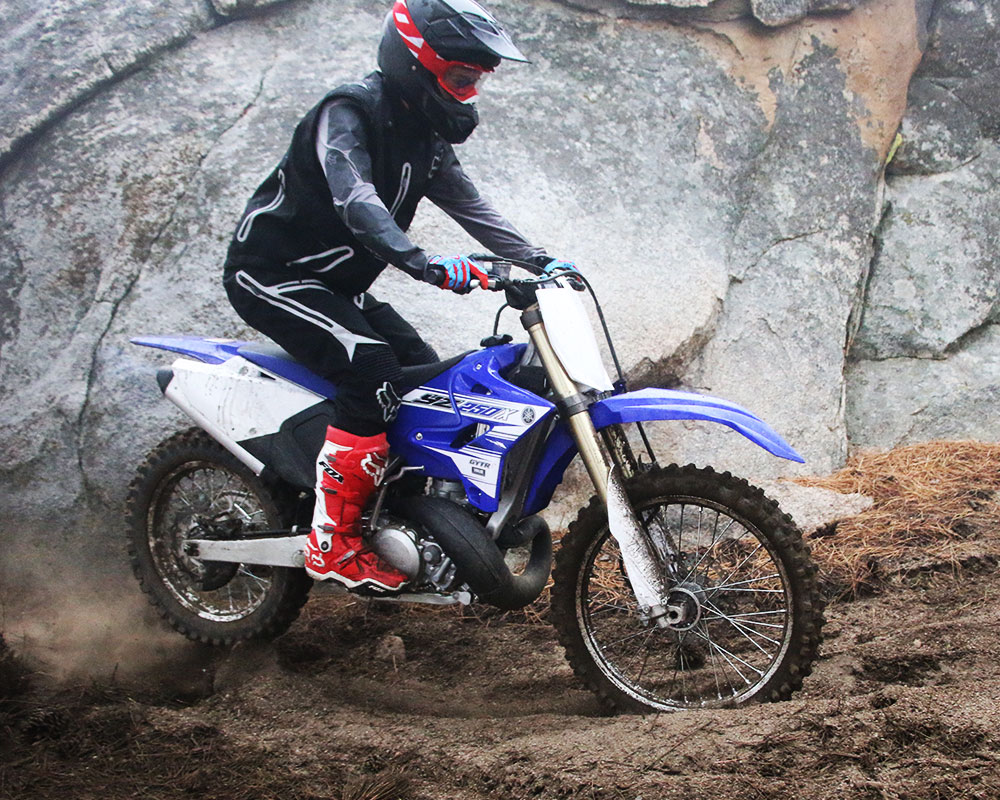
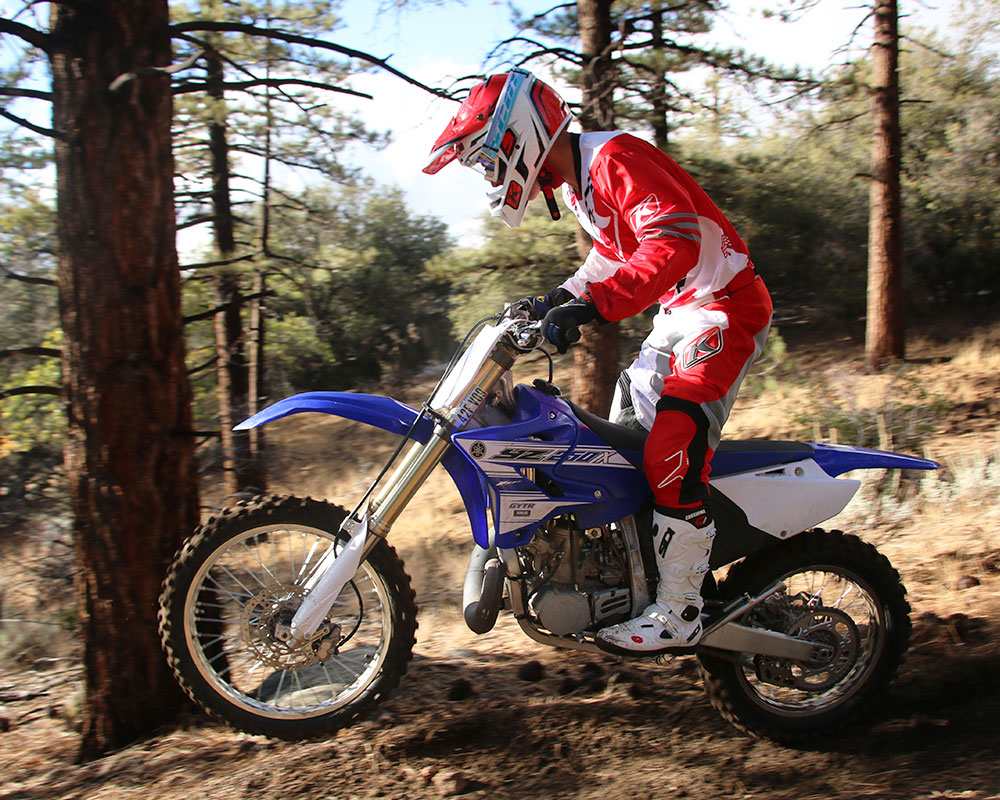
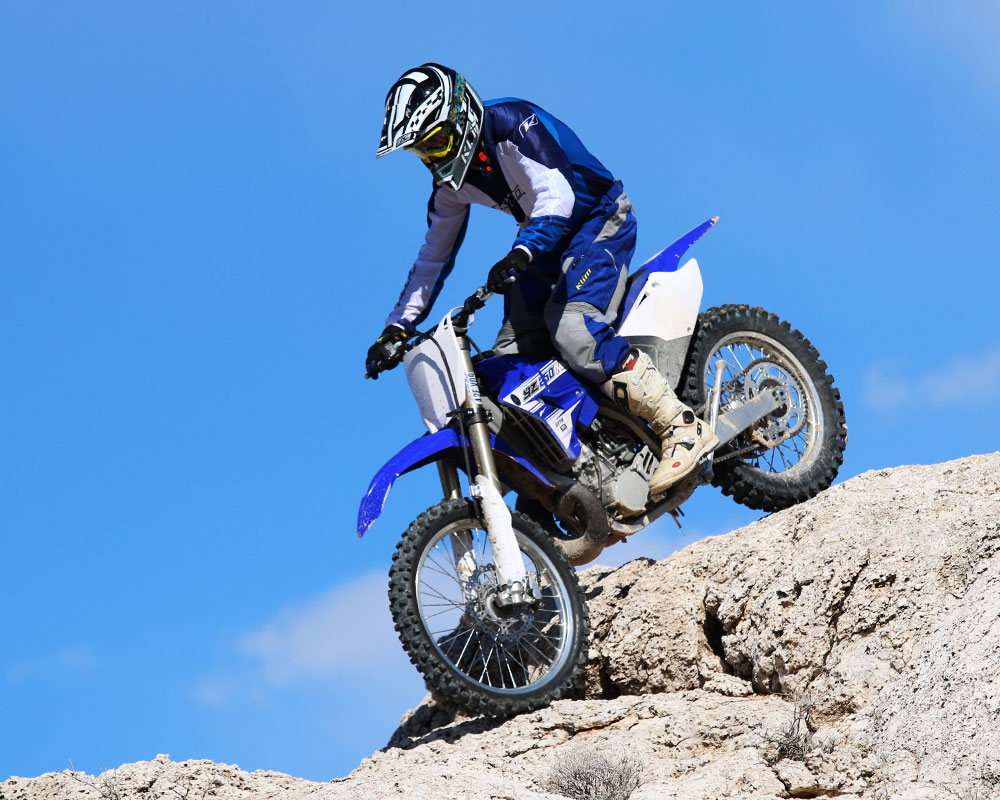

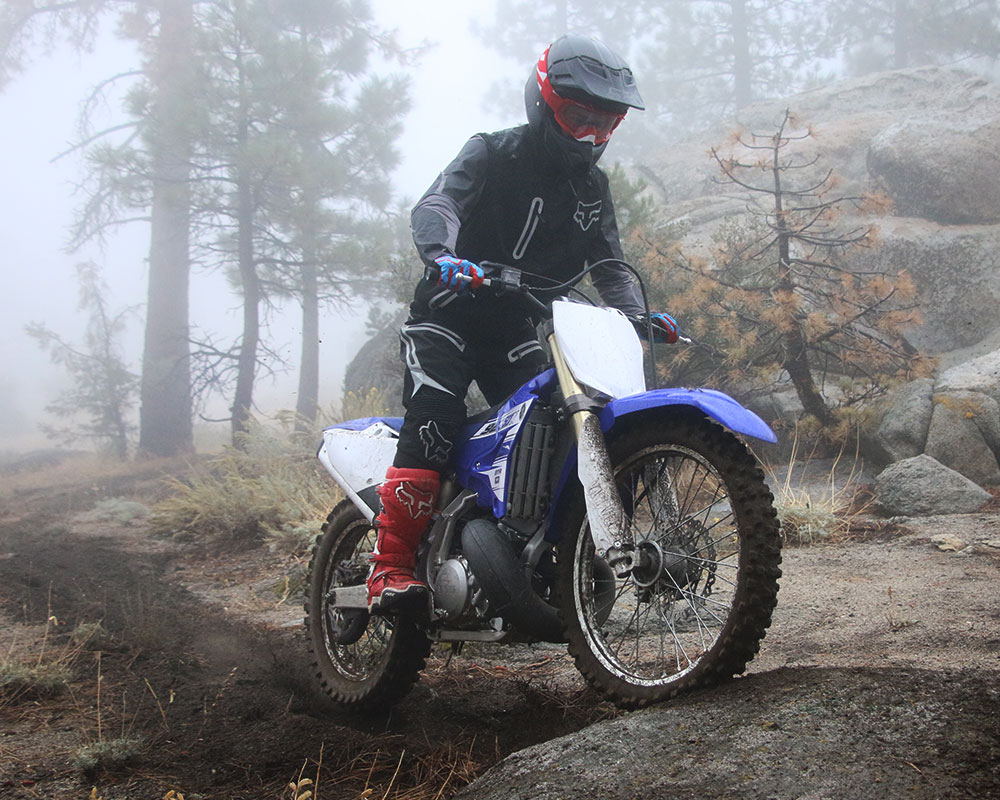
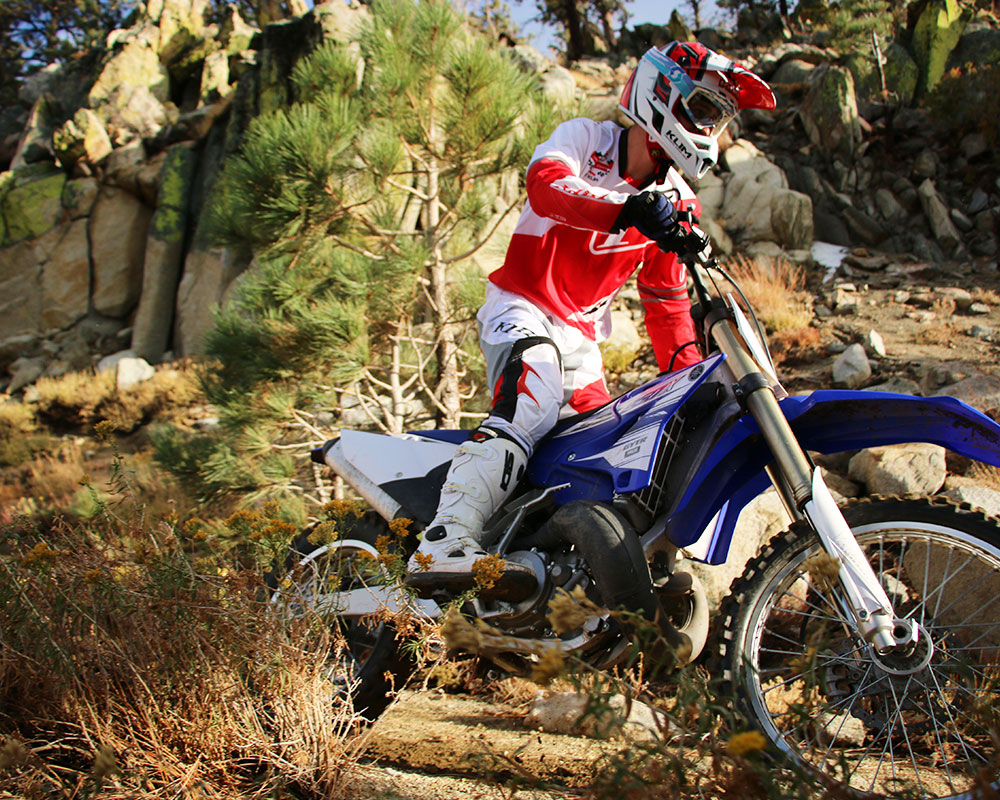
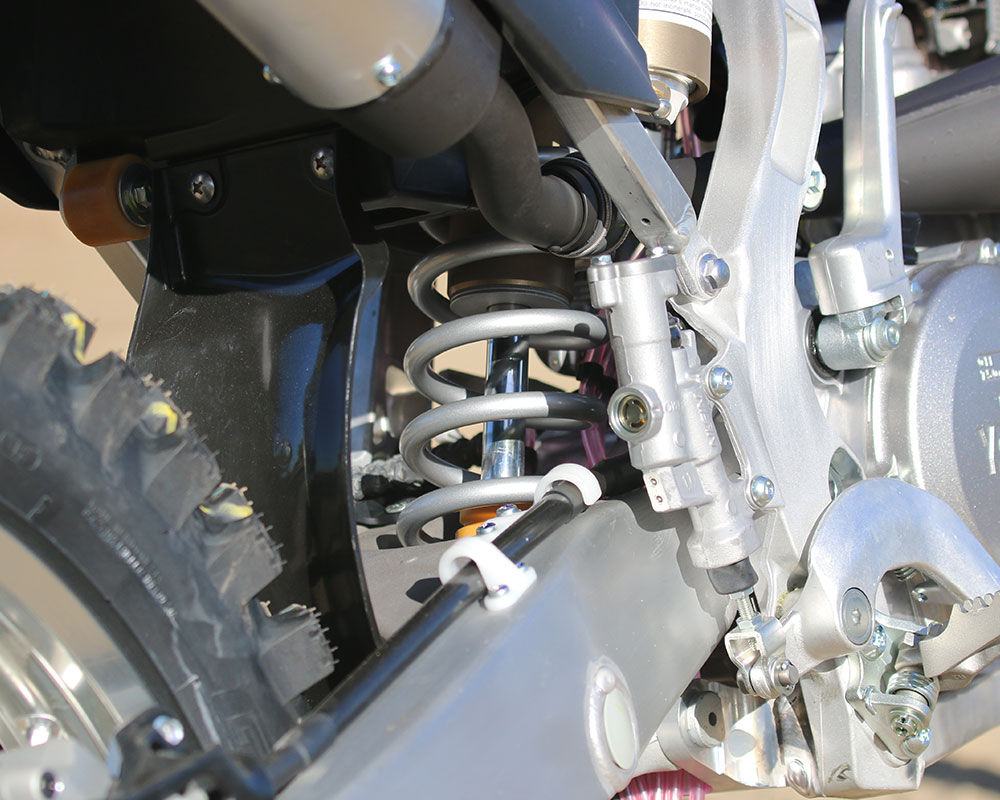
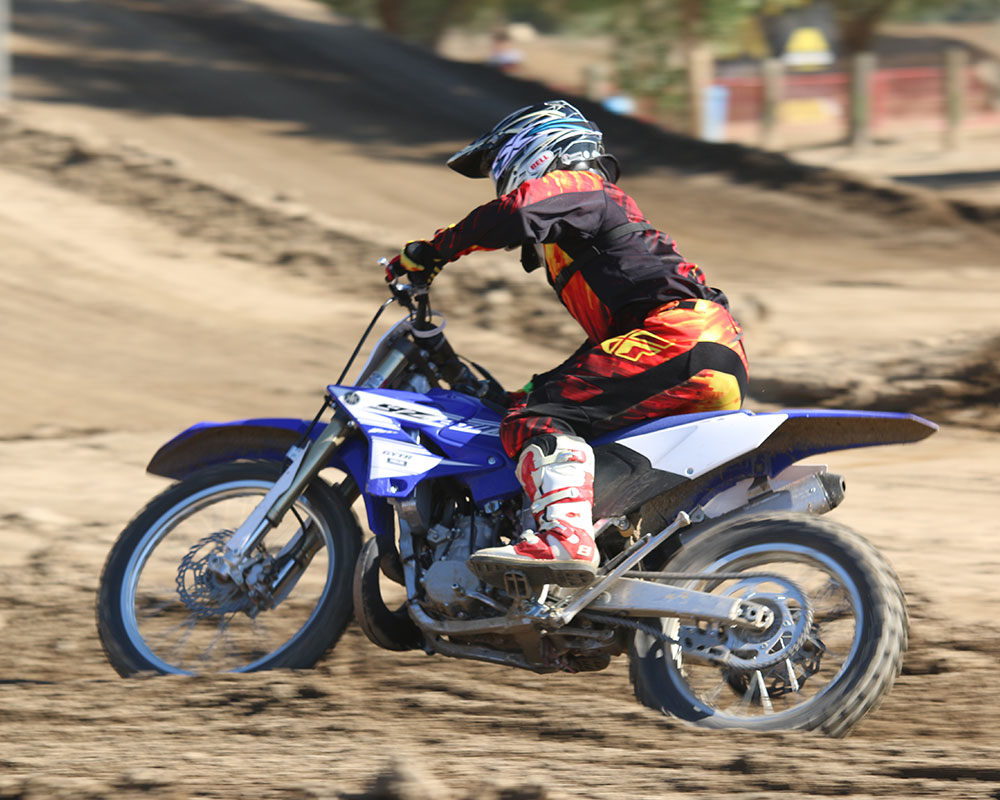
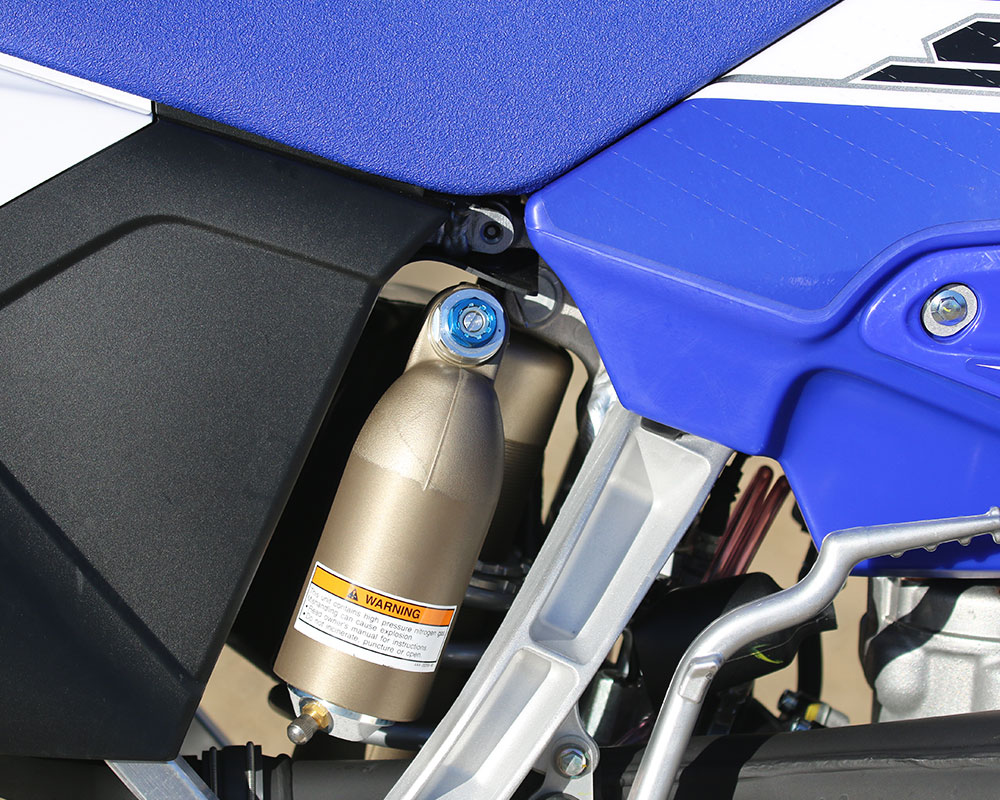
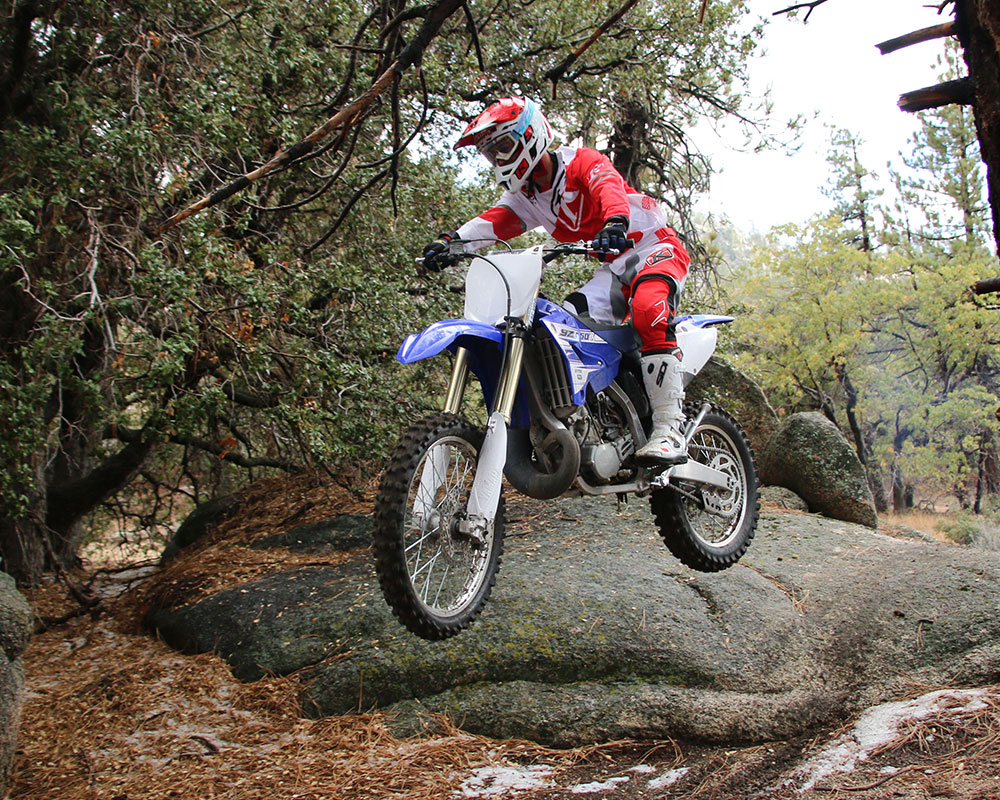

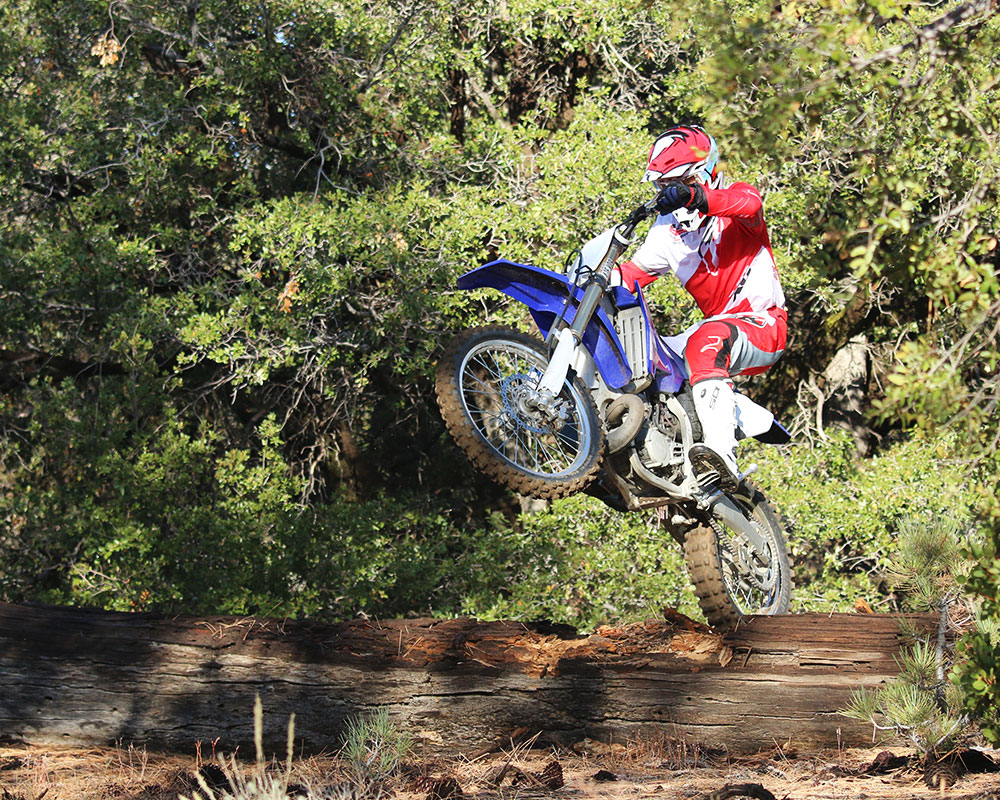
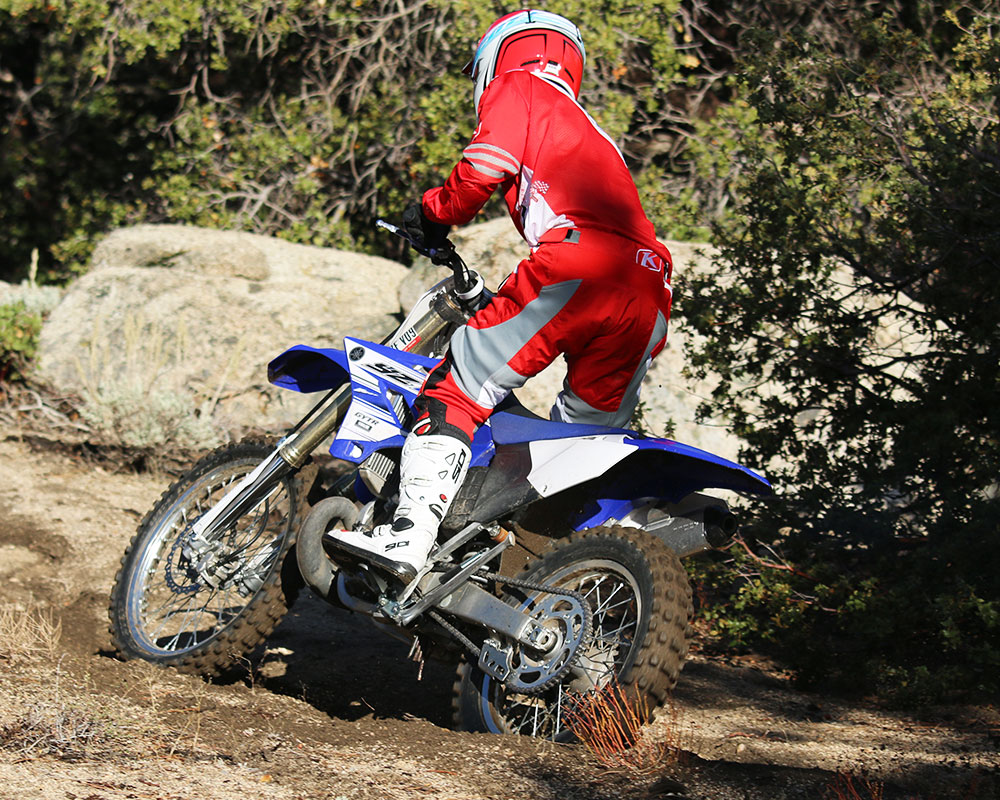
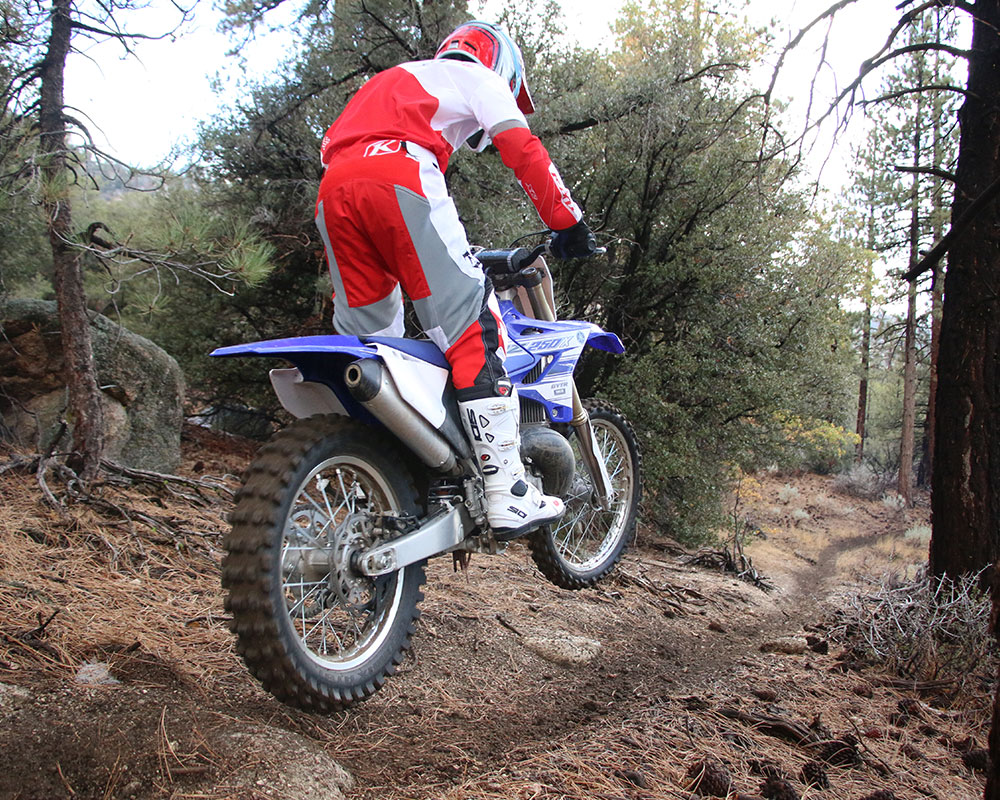
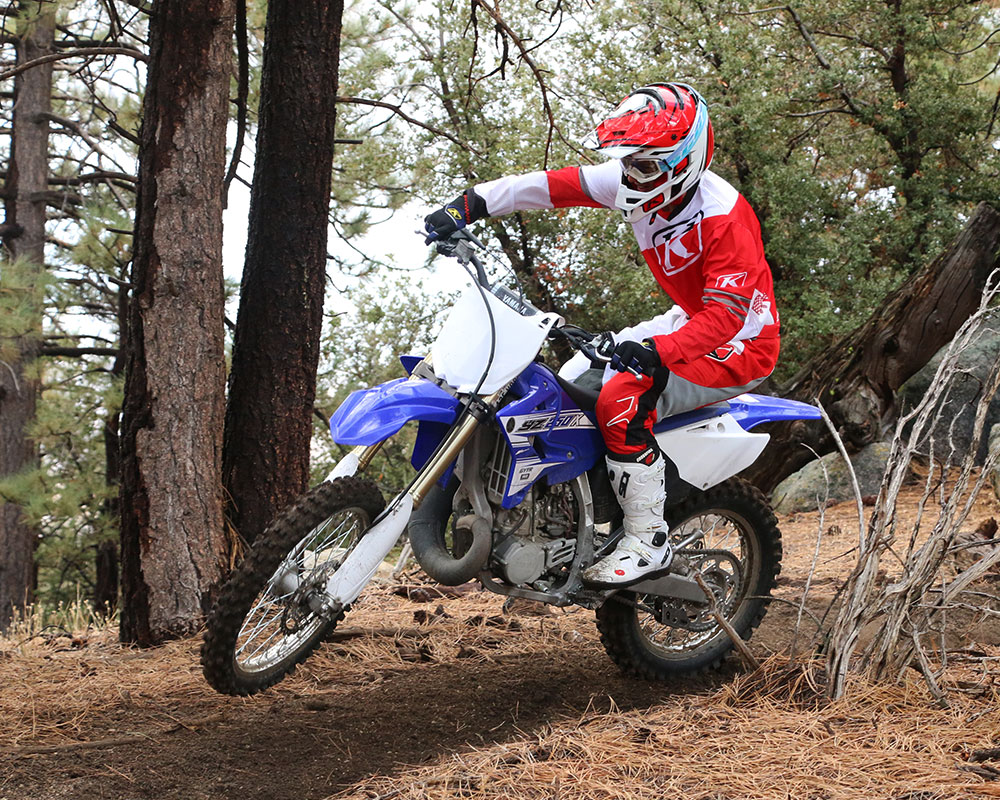


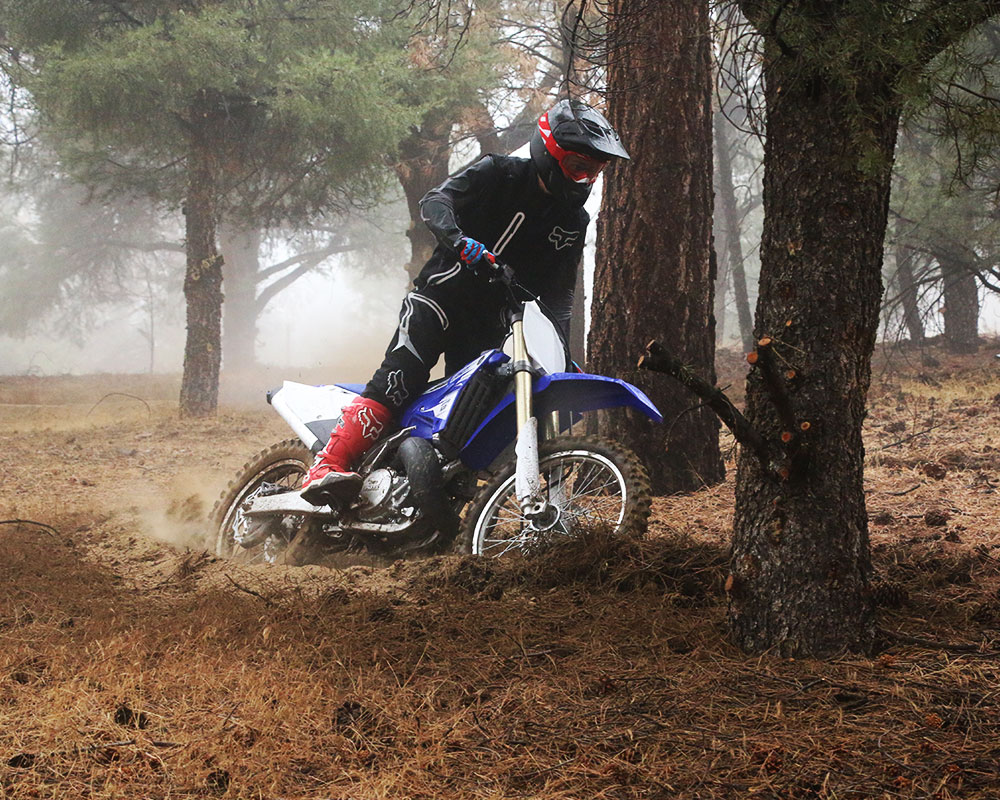
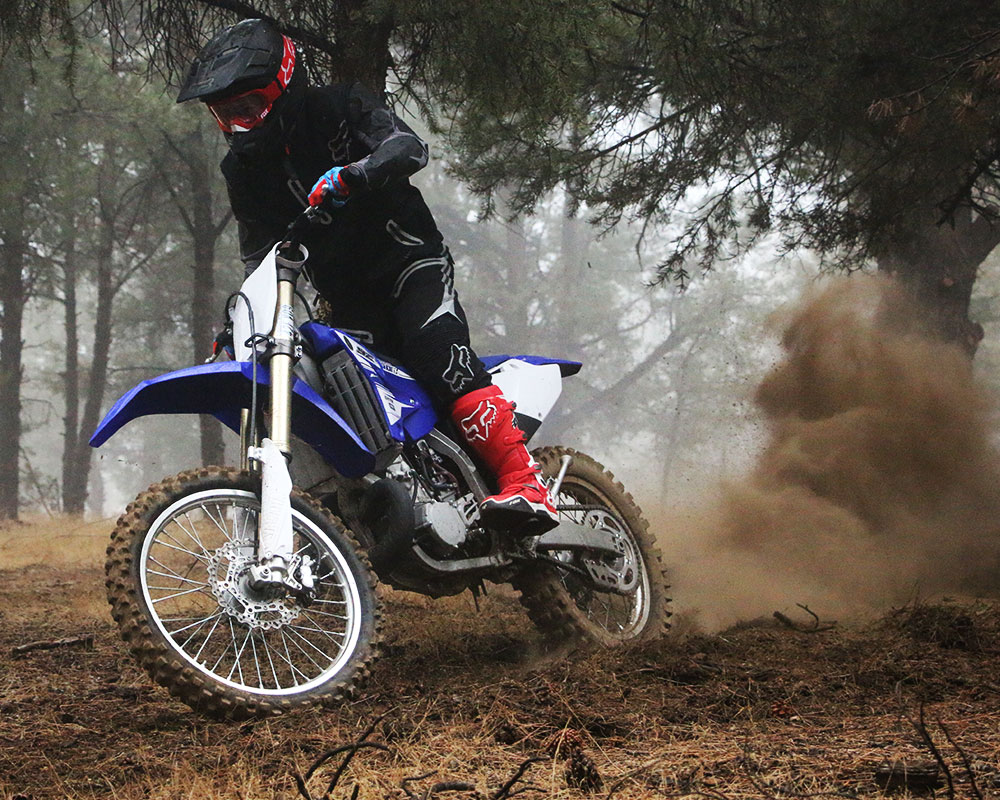


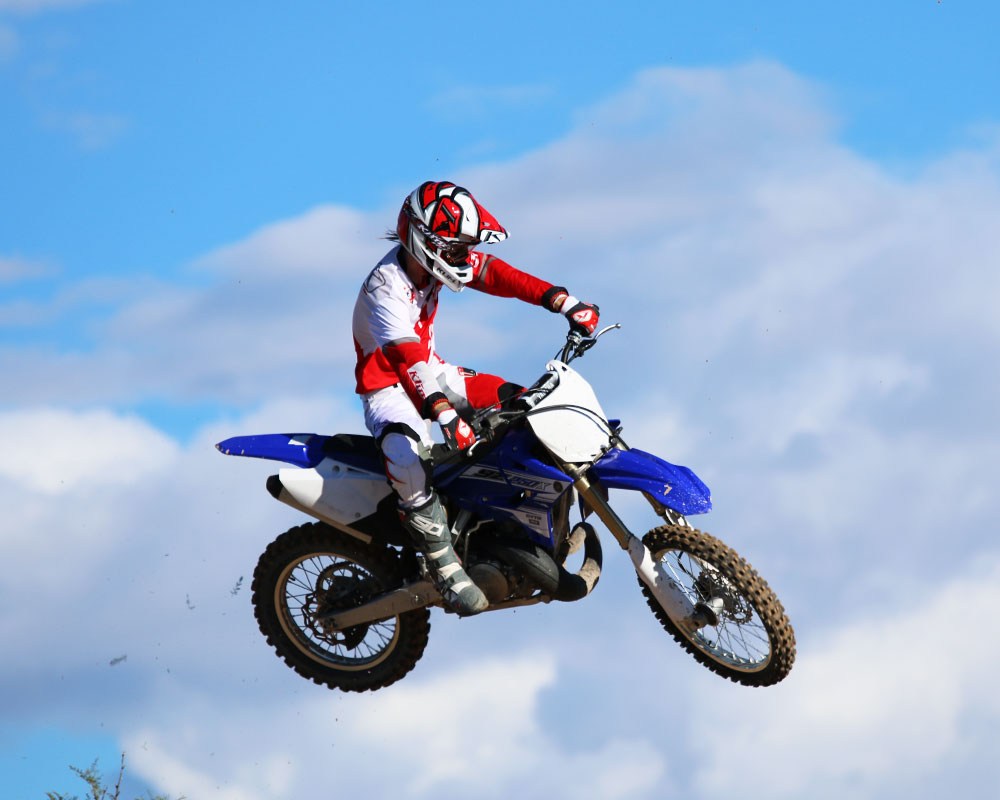
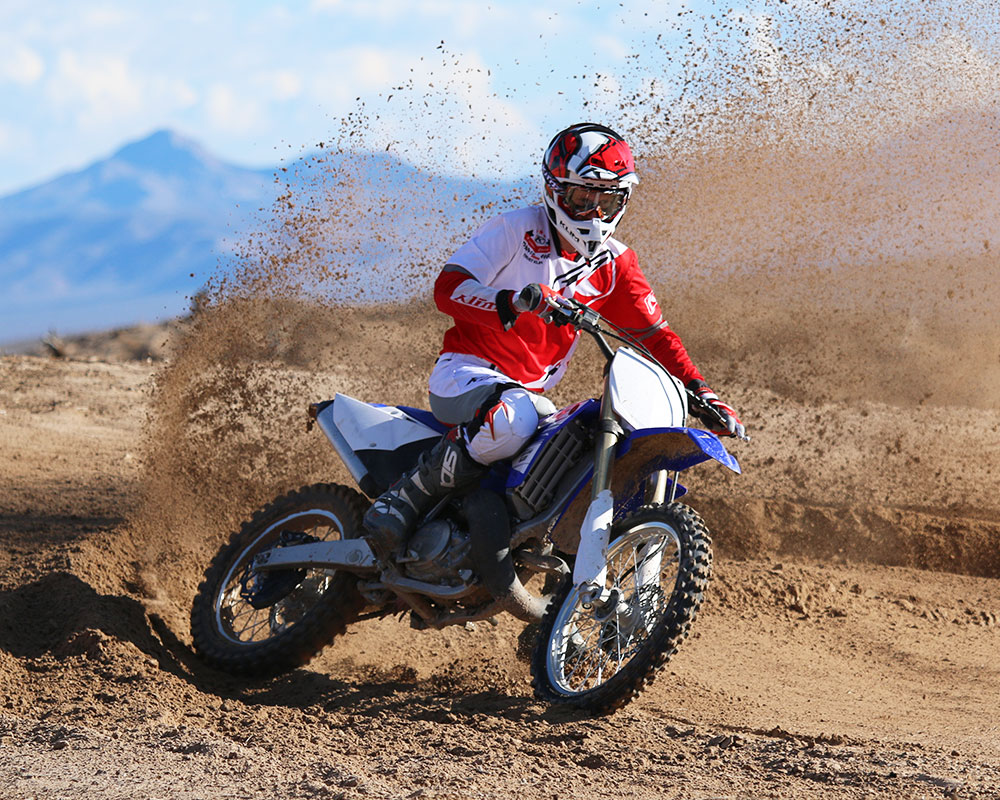
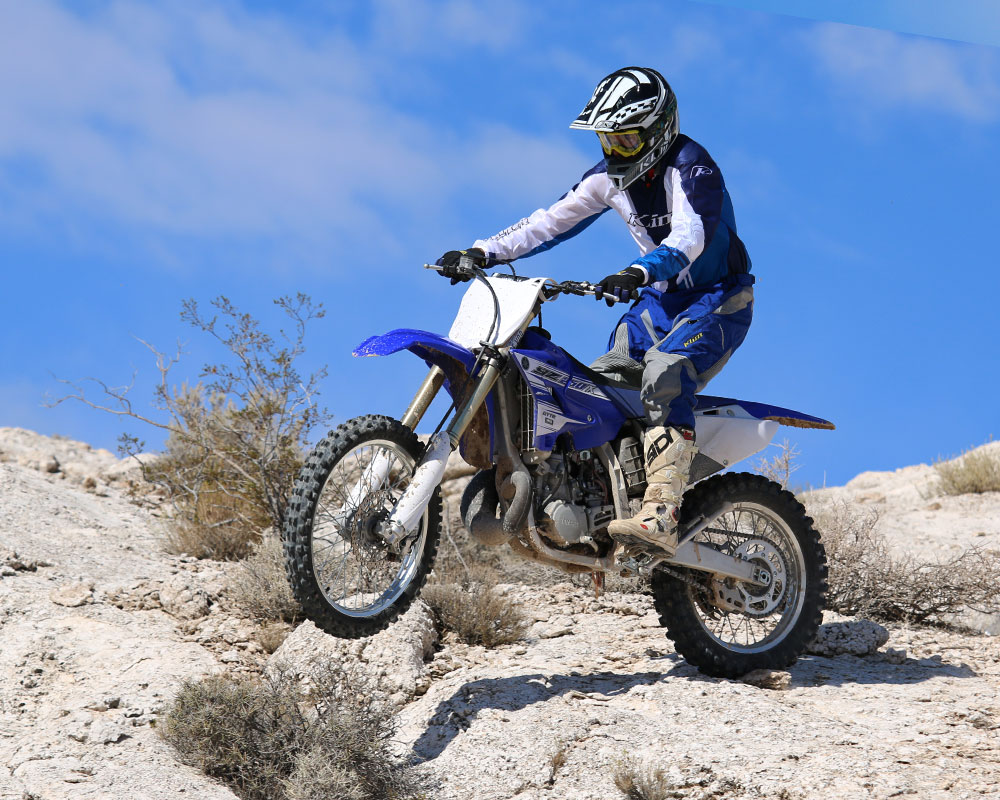
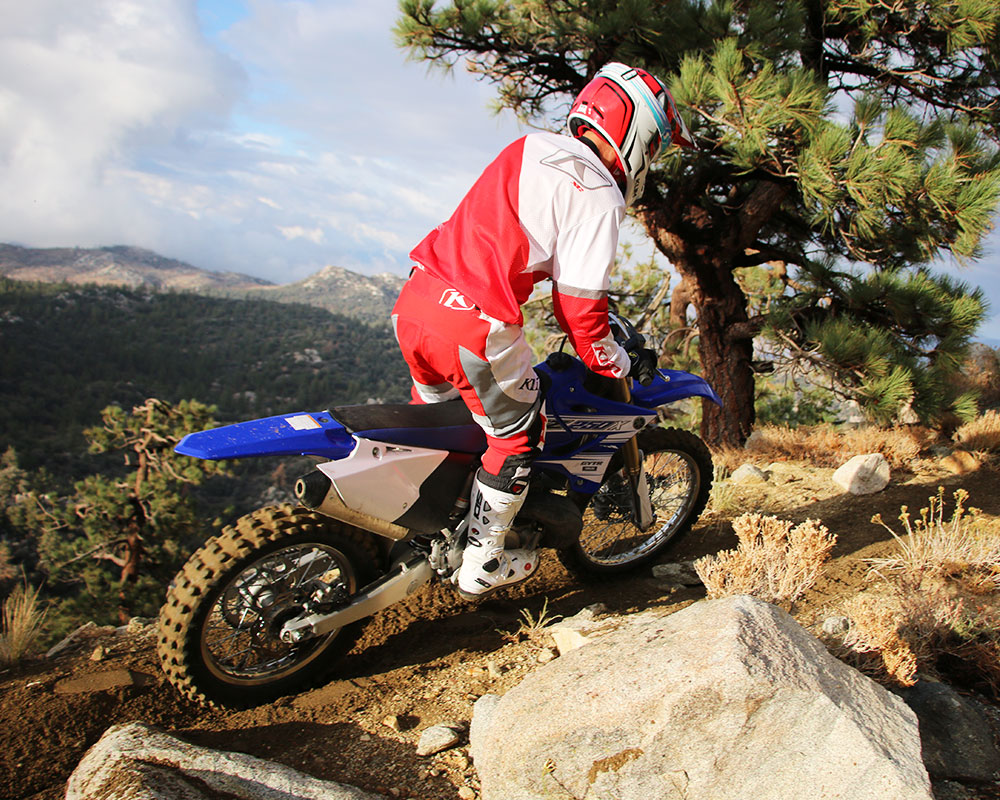
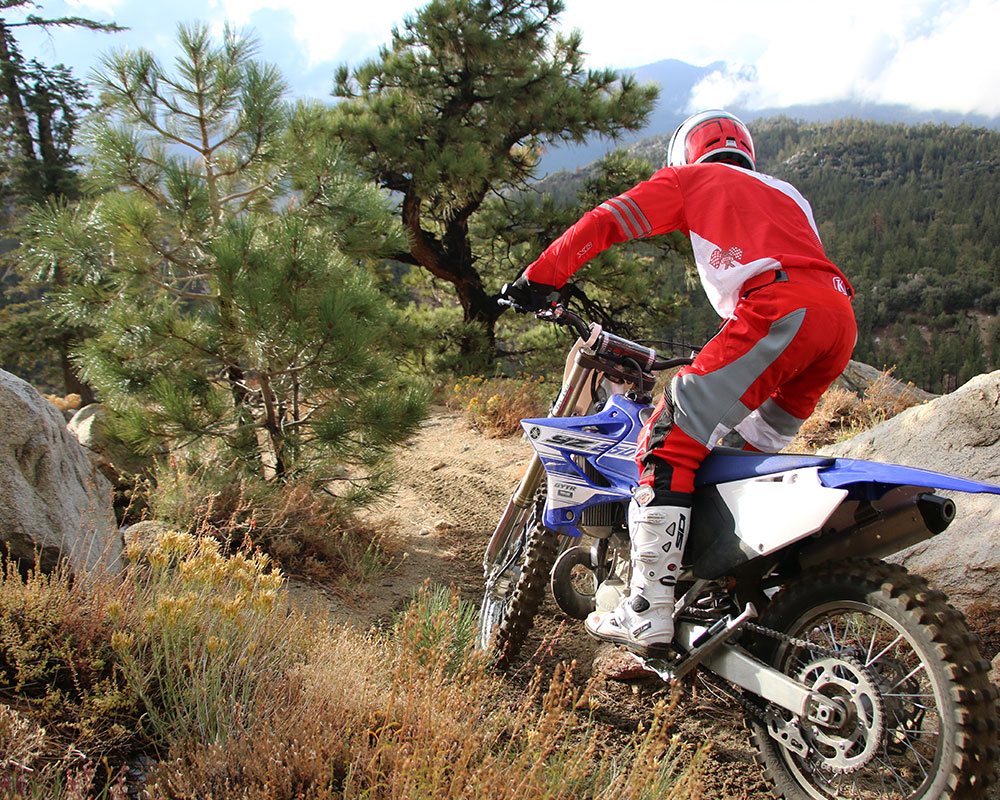
17 Responses to “2016 Yamaha YZ250X”
Rob Bush
I just procured one!
Jimmy Lewis
If you liked flywheel weight on a YZ to minimize stalling you’ll want it on the YZX. The motor is smoother in the pulling way but there is nothing different when it comes to stalling.
Jimmy Lewis
Their weight is no fuel. Ours is full.
David Keyes
Yamaha says 229 wet and 217 dry, could your numbers be for the fx
Jimmy Lewis
No, they were from our scale that we weigh every bike on, for consistency.
Jimmy Lewis
The Beta with electronic oil injection does not load up. It does not need to clean out. The Yamaha does when run slow for a while.
Jimmy Lewis
OK, Looked into this and I’m pretty sure the 242 is a typo and it weighed in at 232 (now fixed in text in the story). I could not find my original note sheet with weight written on it. So I re-weighed the bike now to check (but it also has different tires, a larger tank and a skid plate on it as well as new FMF Q2.1) and it scales in a 235 with what looks like 1.5 gallons of fuel in it, and it is dirty! Doing rough math that puts it at closer to 232-235 stock and I know how I type, the likely cause of this mistake. I have the YZ250 at 231 full of gas on the same scale. The scale is accurate and consistent and in fact we use two scales (one on each wheel) which also acts as a cross check on accuracy. Manufacturer numbers (and numbers reprinted by media outlets that do not have scales or do not take the time to use the ones they have) may not be the best place to get information. But manufacturers weights have been accurate if you agree with what they call dry, wet, ready to ride, etc. Thanks for the heads up and getting us to look at this further.
Jimmy Lewis
Our 242-pound weight was a typo. 232 is correct. It is now fixed.
David Keyes
Great….
Jimmy Lewis
It depends on the gas/oil ratio you mix. You can use less oil but them you have to know what type of riding you’ll be doing and if this is safe. The Beta does it electronically with an oil injection system.
Mark Crotts
I haven’t had mine load up at all. I’m running 40:1 K2 and stock jetting. I have the AS out to 2-1/2 and it runs beautifully. After owning more than 25 KTM’s it’s real nice to have a bike run well from the factory. I bumped the rear spring up to a 5.6 for my 195lb butt and thats it. Run the clickers where they recommended and it’s a jewel. I’m afraid to even touch the clickers now it works so well. It always starts on the first kick in gear or not so who needs an estart? The kicker works every time. At 1200 to 1500 cheaper than the competition whats not to love.
Jimmy Lewis
There is always a trade off in throttle response for the flywheel weight and it is something that we should test. So until then look to see where the YZ guys have been going for weight and we’d suggest a little less.
Jimmy Lewis
I am pretty sure the suspension setting is different. USA has their own settings.
Tommy Sonier
have you got around to test new pipe like the pro circuit platinum on the 250x? or the the fmf fatty?
Jimmy Lewis
We have not tested those yet.
Jimmy Lewis
We would have to test it to be sure but we will tell you the YZ X is very particular to pipe and muffler to keep the smooth delivery. Even though it feels like it gets more “hit” when you alter the pipe/muffler to a different combination, the hit comes from the loss of power being amplified when the power comes back on.
I would recommend getting a YZ powervalve ramp in the activation mechanism for a sharper hit.
Jimmy Lewis
We never tell riding locations, that is your job to go out there and find them. Unless it is Milestone Raceway…